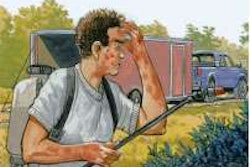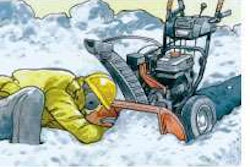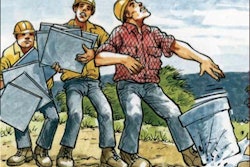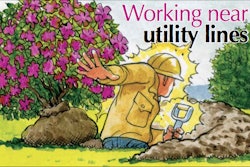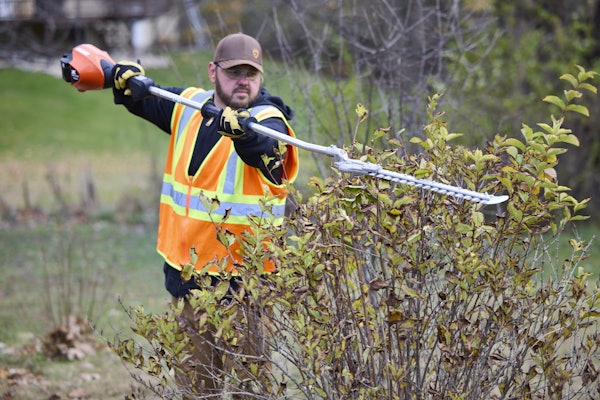How to stay on top of the leading causes of injury
The accident: A 73-year-old man, working part time for a small landscaping company, is cleaning debris from the side of a pool house while the rest of the crew finishes working on the pool. The worker, who is left-handed, stands on an extended aluminum ladder positioned against the side of the structure. As he reaches to his right to scrub the siding with a brush, leaving only his left hand and left foot on the ladder, he loses his grip and falls 25 feet to his death.
The bottom line: Falls from ladders are a leading cause of occupational injuries and even fatalities in the United States, according to OSHA. Serious injuries can result from even short-distance falls, and falling from a height of 11 feet gives you only a 50 percent chance of survival, according to the National Safety Council. Ladder accidents delineate into three categories: 1) using the wrong ladder for the job; 2) improper use of the ladder; 3) accidents in which the ladder fails due to wear or insufficient maintenance.
Over-reaching, the trigger in this accident, is one of the leading causes of falls from ladders. If over-reaching is unavoidable, use a scaffold instead. Following are other safety tips to keep you out of harm’s way.
Before use:
• Make sure you are trained in ladder safety. Your employer should provide this training.
• Carefully inspect the ladder for damage.
• Ensure the ladder is free of slippery substances on the rungs and feet. Before mounting the ladder, clean muddy or slippery shoe soles.
• Reject damaged ladders; tag and remove them from service.
• Use a ladder with the correct strength, type and length for your task.
• Get help when handling a heavy or long ladder.
• Keep ladders away from electrical wires.
• Place the ladder on a firm, level surface. Use a ladder with slip-resistant feet or secure blocking, or have someone hold it.
• Rest both side rails on the top support.
• Tie off ladders at the top to prevent slipping.
• Set up barricades and warning signs when using a ladder in a doorway or passageway.
When in use:
• Always face the ladder when climbing or working from it.
• Keep the center of your body within the side rails.
• A ladder should not be placed horizontally as a scaffold or runway.
• Do not carry objects in your hands. Hoist materials and attach tools to a belt.
• Do not work from the top three rungs.
• Do not use a portable ladder if you have the option of a fixed stairway or scaffold.
• Do not join two short ladders to make a long ladder.
• Do not paint wooden ladders. Paint may hide defects. Instead, use wood preservatives or clear coatings.
• Do not use a ladder during windy weather.
• Never move a ladder while someone is on it.
• Lower the top section of an extension ladder before you move it.
• Keep ladders at least 10 feet from overhead electrical lines and other obstructions. Aluminum, and even wet or dirty wood or fiberglass ladders, can conduct electricity.
The Three-Point Rule
Always maintain three-point contact by having two hands and one foot, or two feet and one hand, on the ladder at all times. Keep your body centered on the steps, and always face the ladder.


